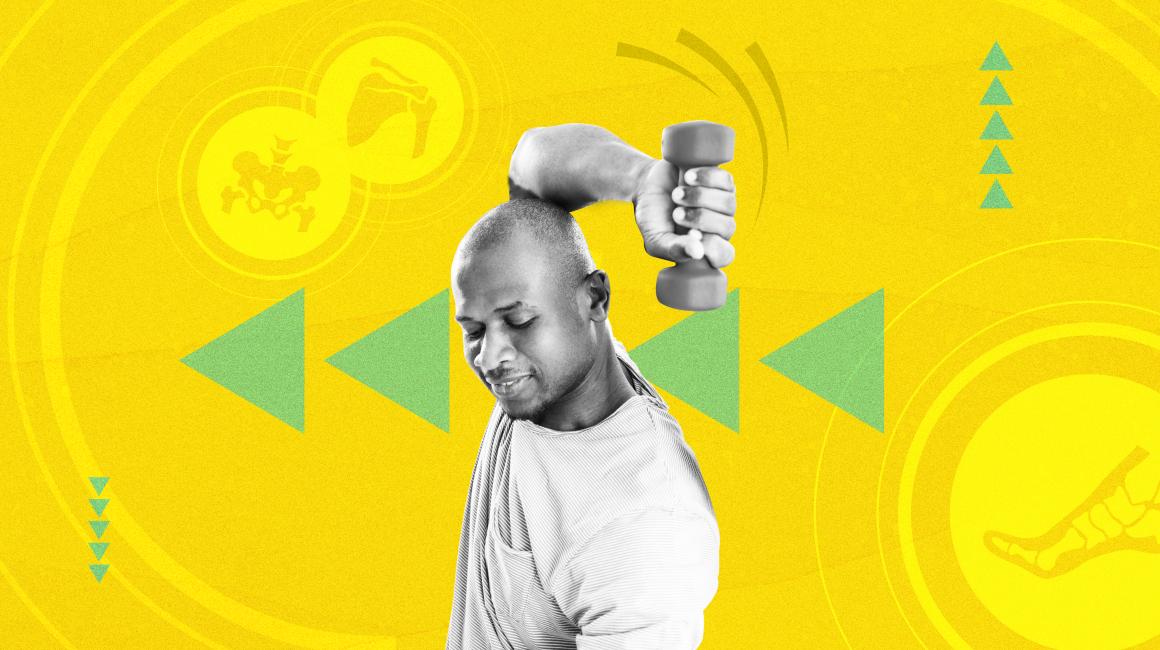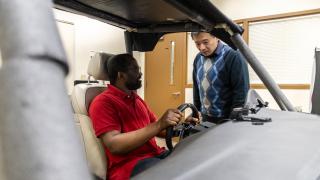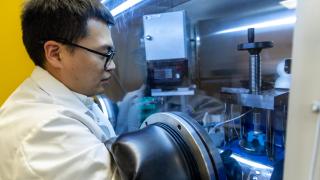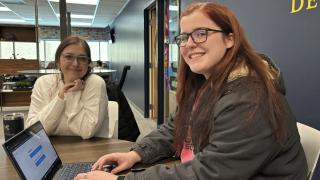
This article was originally published on October 26, 2021.
Physical therapy can work wonders for patients dealing with chronic pain or acute injuries, but its effectiveness hinges a lot on patient follow-through. That’s because during your initial visit to a physical therapist, you’ll likely learn a series of rehab movements and a routine for continuing those exercises at home. But you can’t slack on your homework and expect results.
Just as important as actually doing the exercises is doing them correctly, which can prove tricky for patients once they leave the office. At home, it can be difficult to know if you’re extending an arm exactly the same way, to exactly the same position as you learned during your office visit. (Plus, if you do an exercise incorrectly, there can be substantial risk of making things worse.) But UM-Dearborn Associate Professor Samir Rawashdeh and his collaborator, University of Kentucky physical therapy professor Tim Uhl, have been working on an innovative solution. As with traditional physical therapy, their RehabBuddy system starts with an in-person visit to a physical therapist. But while you’re learning your rehab exercises, now you’ll be wearing a small sensor that records a “map” of the correct movement. Once you’re home, you simply put on the sensor, open the RehabBuddy app, perform an exercise, and an on-screen visualization helps you see if you’re doing it correctly. When you are, the path you create with your movement matches the programmed path, making it easy to make on-the-fly corrections. Check out this video to see how Rawashdeh uses the wearable sensors to track movements.
Rawashdeh says RehabBuddy represents a big leap forward over similar products. Most exercise or movement apps available today only have pre-programmed actions, so their movements aren’t very customizable to a particular person and you can’t input custom exercises. RehabBuddy can do both. Plus, it “learns” its movements directly from a trained physical therapist. Rawashdeh hopes that will give patients an experience that closely approximates the high-quality therapy you get in your therapist’s office. Right now, they’re conducting a clinical trial to determine its effectiveness.
Interestingly, Rawashdeh started thinking about engineering applications for physical therapy — and met his collaborator Uhl — when his own doctoral and post-doctoral advisor at the University of Kentucky was rehabbing a rotator cuff injury. (Uhl was his advisor’s physical therapist.) “Throughout this whole project, me as an engineer and him as a physical therapist, we had to have a lot of conversations to get on the same page,” Rawashdeh remembers. “For example, from their perspective, they care and think about 3D positions in space to describe exercises. But from an engineering perspective, our sensors don’t measure that directly. So there were huge translation issues like this, and it took a while, but I think we finally understand each other’s domains pretty well.”
Rawashdeh said part of his own breakthrough in understanding actually came from doing physical therapy himself. “I hurt my knee, and when I went myself, I felt like I finally got all the little implicit things,” he says. “Imagine trying to understand what Paris is like just from someone describing it to you, without pictures. And then you go there yourself. It’s going to be different than what you imagined. So having to do physical therapy definitely helped my learning curve to understand the current standard of care.”
###
Rawashdeh and Uhl’s research is supported by a $200,000 grant from the National Science Foundation’s Smart and Connected Health program.



